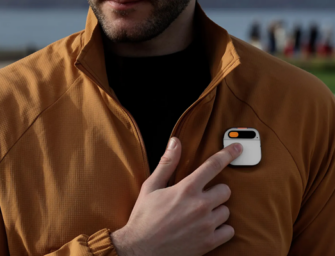ID R&D Shrinks Voice Biometrics to Internet of Things Edge Processing

Biometric technology startup ID R&D debuted a new version of its vocal identification engine IDVoice that takes up less than 1Mb, 2.5% of the 40Mb. The size difference allows Internet of Things devices to include vocal security without accessing the cloud.
Small, Accurate Voice Security
New York-based ID R&D offers an array of digital authentication technology for voice and visual biometric data, but the newest IDVoice could bring its technology to a much wider assortment of smart technology. The new IDVoice ups the accuracy of its voice recognition, despite requiring so much less in computing power. ID R&D presented the new technique at the 2019 National Institute of Standards and Technology Speaker Recognition Evaluation Challenge in December and it is already being used by call centers and a mobile banking app to authenticate users.
The real potential for the smaller IDVoice is in low-power smart devices. Voice-controlled devices that don’t need to connect to a server to function, but would benefit from personalized security are a perfect match for the new version of the product. Managing home security systems, cars, and even smart televisions by voice is more efficient, but owners would want to ensure that not just anyone can turn the devices on and off. The new IDVoice could theoretically integrate into those products to ensure only those approved can control them, without needing to spend the time or energy of sending the data to the cloud for confirmation.
“With rising customer demand for conversational interfaces, ID R&D is committed to improving deployment, performance, and the user experience, no matter the channel or application,” ID R&D chief science officer Konstantin Simonchik said in a statement. “With IDVoice v2.11, developers can offer advanced voice biometric authentication on even the smallest device, opening up a whole new world of possibilities for securing the connected world.”
Extra Security and More Privacy on the Edge
People are concerned about security and privacy when it comes to voice technology, according to many surveys, including one recently conducted by ID R&D. By offering a way to keep the voice biometric check on a device, the new IDVoice potentially offers an answer to not only the question of security in voice technology but of privacy as well.
Edge processing relies on the efficiency of less computing power to offer privacy. Device manufacturers who want to include voice security on their devices without relying on Amazon or another large company’s cloud services would want something the same shape as ID R&D’s feature. The ability to apply voice within a device is what made Apple willing to spend a reported $200 million to acquire AI startup Xnor recently. On-edge audio processing is a growing field in general. On-edge audio processing is part of the customizable voice assistant platform speech tech developer Sensory debuted recently. The new Picovoice platform, which handles voice requests in devices built with ARM microcontrollers, also handles audio processing within the device, without needing to send data to the cloud. Vocal security like the one described in ID R&D’s updated IDVoice platform would not compromise that privacy in favor of security, perhaps enticing those customers who are interested in the features of a smart device, but who have refrained from buying before because of privacy, security, or both.
Follow @voicebotai Follow @erichschwartz
Deepfake Security Concerns Are Limiting Voice ID Adoption: Survey
Apple Acquires Edge-Processing AI Startup Xnor for $200M: Report








